This August (and a little of September), we’re taking a trip back in time to review the second season of The X-Files. In November, we’ll be looking at the third season. And maybe more.
Firebird is the first multi-part story told in the pages of The X-Files. Writer Stefan Petrucha and artist Charles Adlard don’t transition from done-in-one stories to two-part adventures, instead skipping the middle step and producing a three-issue epic. While A Little Dream of Me exposed the limitations facing a creative team working on a tie-in, Firebird demonstrates the strengths of the format. Spanning from Siberia to New Mexico, Firebird has an epic scale that would not be possible on the second season of The X-Files.
(Rather interestingly – and perhaps tellingly – Petrucha takes the comics to places that the show wants to go. The American South-West would be very difficult to replicate in Vancouver, prompting the creative team to make an ambitious effort to bring Mulder and Scully to New Mexico in Anasazi, infamously painting a quarry red to achieve the desired result. The show would wait until the fourth season before it was confident enough to take Mulder to Siberia in Tunguska and Terma.)
As with Not To Be Opened Until X-Mas, Firebird is very much a comic book story. While the show was reluctant have Mulder and Scully directly encounter aliens, the story features a monster that looks like something from the Lovecraft mythos. While the stakes on the show were generally rather personal to this point, Firebird puts the entire population of New Mexico (if not the world) at stake. While the series took its time revealing its evil conspiracy, Firebird gives us a cabal headed by a monologuing skull-holding would-be supervillain.
Perhaps surprisingly, this works. It’s clear that Petrucha and Adlard are aware that they are working in a different medium with different expectations and conventions. Firebird is very much an X-Files comic book epic, a story that couldn’t be realised on film. And there’s something very endearing about that.
On the surface, it’s quite interesting how many of the ideas proposed by Stefan Petrucha in Firebird would become a part of The X-Files mythos, with the show using many of the same plot beats or iconography. Firebird is a story built around ideas that would become part of the show’s grand mythology over the next half-decade. The most obvious example is the Tunguska incident, a fascinating piece of U.F.O. folklore that Carter would officially incorporate into the mythology during an early two-parter in the show’s fourth season.
However, there are other nice touches that seem to foreshadow future developments, including an alien feeding off nuclear energy before going on a rampage – as in The Beginning – and even an emphasis on Native American mythology – a month before Anasazi aired. Even Khobka’s reference to the “faceless men” pursuing him – although a purely metaphorical reference to the agents of the conspiracy – seems to prefigure the appearance of the alien rebels in the fifth season.
Of course, all of these connections are likely coincidental. After all, these are all ideas that fit very well with the broader themes of the series, so it makes sense that both Petrucha and Carter would seek to integrate them into their separate mythologies. It seems likely that the show would have explored Native American culture even if Firebird had never been published, and Carter had originally planned to send Mulder to Moscow at the start of the second season. It is, if anything, a sign of how well Petrucha understands the show’s core mythology and themes.
Firebird really capitalises on the fact that there is no budget to worry about on a tie-in comic. It costs as much to have Charles Adlard draw an alien monster as it does to draw a page of Mulder and Scully talking. There are no health-and-safety issues for stunts, no limitations on budget for CGI. Petrucha could write Independence Day as easily as he could write Beyond the Sea or Ice. So Firebird goes all-out, giving us a grotesque flying alien monster and massive fire-fights with tanks and epic scale.
On the one hand, this feels a little odd. Like Scully shooting down the U.F.O. in Not To Be Opened Until X-Mas, there’s a sense that this isn’t what The X-Files is about. Even when the show did get a feature film budget in The X-Files: Fight the Future, it was not a series about fire-fights and pending race-against-the-clock world-ending threats. Whether that was due to aesthetic choice or simply budget restrictions, it doesn’t matter; this was the style of the show. So it does feel a little out of place.
On the other hand, this is mainstream comic book. It lends itself to a larger scale and a sense heightened reality. If the reader is able to accept some of the conventions and larger-than-life storytelling that comes with this, Firebird works beautifully. It’s hard to imagine Scully going back to her default after seeing something like the eponymous alien, and it’s hard to believe that a crisis on this scale could be successfully covered up, but it works because Petruscha and Adlard own the decidedly pulpy comic book tone of the story.
After all, this team introduced their own alternate conspiracy simply so they would not wind up tripping over the tangled mythology that was still taking shape on the show. It’s a rather ridiculous solution to a ridiculous problem, but Firebird works well because it embraces that absurdity. The idea of “Project Aquarius”, populated by men in black who refer to each other using codenames from Reservoir Dogs and led by an official who monologues while playing with a skull, feels audacious and showy in a way that gives it a unique texture.
The use of the name “Aquarius” gives Petruscha and Adlard’s conspiracy a nice millennial twist – suggesting the long-held new age belief that the twentieth and twenty-first centuries represent a transitional state, as if the world is on the cusp of some momentous change and dramatic transformation. The fact that the “firebird” itself resembles the phoenix, born from nuclear energy, is a potent image.
Firebird acknowledges the absurdity of the second conspiracy of sinister powerful white men who secretly rule the world. “Now, now,” the leader of the conspiracy remarks to Mulder. “Nothing’s certain. Let’s just say we like to think we control the world. After all, we could be actors hypnotised into believing we are who we say. Or just one of a dozen groups — each believing they’re in power when no one truly is. That’s the problem with conspiracies — they have a tendency to divide, multiply, then vanish.” He adds, “Point in fact, Mulder, we might even be a dream.”
It’s a rather cheeky way of acknowledging the contrivance, while also playing into the larger themes of Petrucha’s run. In a way, it feels like the comic is having a bit of fun at the expense of the parent show – gently mocking the idea of an all-powerful cabal that rules the world from the shadows, hiding a singular and important version of “truth.” What if there are lots of men in lots of rooms, each with their own separate versions of the truth?
(It’s also quite fun to read the comic in light of the revelation that Millennium takes place within the same fictional universe as The X-Files. Even within the shared mythology of Chris Carter’s television shows, it seems like there are quite a few powerful groups that seem to be competing for power in their own separate ways. That was perhaps the most disappointing aspect of the eventual crossover between Millennium and The X-Files. Mulder and Scully teaming with Frank Black is okay, but imagine the fun of pitting the Syndicate against the Millennium Group!)
Petrucha’s run seems to be quite cynical in its approach to Mulder. A Dismembrance of Things Past and A Little Dream of Me both suggested that Mulder’s memory of Samantha’s abduction might be incomplete or distorted. In A Little Dream of Me, Mulder accepts that his crusade to uncover the truth is ultimately selfish – that he is motivated primarily by his own loss rather than some ideological desire.
Firebird continues this deconstruction of Mulder’s philosophy, suggesting that Mulder’s desire for the truth will inevitably have terrible consequences for those caught in his slipstream. It’s not a novel theme by any means. The second season makes the point repeatedly, in episodes like Ascension or End Game or Anasazi. Mulder’s zealous pursuit of the truth with bring pain and suffering to countless innocents.
Mulder is repeatedly linked to the character of Khobka, an old man who shares Mulder’s curiosity and drive. The story links the duo in a number of ways. Khobka’s animal totem is the fox, an image which recurs throughout the three-part story, thematically connected to Mulder. Indeed, the comic closes on the image of the desert fox staring up at the sky as the eponymous creature retreats into darkness, only for the fox to continue on its way directly afterwards. One might wonder if Mulder is that different from the New Mexican canine.
Khobka is indirectly responsible for the alien’s rampage, having found the creature when he was younger and having taken part of it for himself. “I wanted to hold a piece of the sky so badly, I wept,” he confesses to Mulder. “I truly thought that was power. I thought that was truth.” The thematic connection to Mulder’s character arc is obvious. Mulder is just as keen to secure tangible “proof” and “evidence” vindicating his beliefs, and seems blind to the damage that his quest might cause.
Firebird might even go a little bit further. Perhaps Mulder’s quest is like the “firebird” itself, a massive force that leaves untold destruction in its wake. Feeding on nuclear energy to sustain itself and transform itself into a massive destructive force, the creature seems like an effective metaphor for the unintended consequences of the pursuit of knowledge. Mulder seeks truth in the same way that Einstein sought knowledge. The consequences of that pursuit were deadly. Of the alien, but possibly also of Mulder, Khobka reflects, “In his blindness, he may consume the Earth…”
One wonders what the ultimate cost of Mulder’s search might be. Obviously, countless lives will be lost in Mulder’s pursuit of this conspiracy, but what happens if Mulder does find what he wants? What happens when Mulder exposes a massive lie to the world population, revealing that governments have been doing terrible things and that the universe is populated with hostile and predatory aliens against which we cannot defend?
Those revelations will inevitably have massive consequences. Towards the end of The X-Files, Mulder discovers evidence of planned colonisation, a scheme that will effectively set an end date for the entire human race. What would revealing that knowledge do to the world? What would happen when people discover that the date has been set? While Mulder has truth and righteousness on his side, it’s hard not to imagine that his quest could destroy the world as we know it – destroying the fabric of civilisation.
Scully has very much been a secondary character up to this point in the run. Petrucha’s scripts have been largely driven by Mulder, with Samantha referenced repeatedly and playing a large part. Scully’s faith plays a small part in Not To Be Opened Until X-Mas, but her biggest contribution to that episode is allowing the bad guys to steal a body. Mulder was the focus of A Dismembrance of Things Past and A Little Dream of Me, and is very much the key character in Firebird.
It seems quite possible that this is a result of the emphasis on Mulder in the first half of the second season, during Gillian Anderson’s limited availability. That first run of episodes cemented the impression that Mulder was the key character, and Scully was secondary. It’s possible that Petrucha was having difficulty putting emphasis on Scully because many of the logical character beats would flow from One Breath – character beats that the show would probably be best-suited to handle, but took its time addressing.
Still, Firebird does contain a nice Scully moment in the second issue, after Scully actually sees an alien. Although she sees it in a mirror, it’s still a pretty big deal. It becomes quite difficult for Scully to deny its existence. Then again, this is arguably just an extension of what was happening in the show at this point in the second season. After Scully meets a shape-shifter in End Game, plausible deniability becomes a lot harder to maintain.
To Petrucha’s credit, he does try to address the issue of Scully’s skepticism, which was already looking quite difficult to maintain. “At times, with my heart in my throat, I want to drop the pretense of argument,” she admits to herself in a moment of crisis. “I want to say, Mulder, you’re absolutely right. The world can give in at any moment. Everything really is always up for grabs.” Although it does undermine Scully’s philosophical position slightly by suggesting that she really does buy into Mulder’s theories, it is a lovely character moment.
After all, Scully’s position is harder. In the real world, Mulder’s position would be ridiculous. However, Mudler and Scully do not live in the real world. The universe of The X-Files operates according to its own crazy rules of biology, chemistry and physics. In light of that, Mulder’s “anything goes!” attitude towards explanations makes a certain amount of sense. It could be the Mexican goat-sucker. It could be aliens. It could be magic mushrooms that allow you to talk to the dead, open a portal to another dimension and give you psychic powers, because why not?
In contrast, it takes a lot more integrity and strength of will for Scully to hold on to basic scientific theory in light of all this. Scully is a character trying to define objects and phenomena that exist outside the scientific vocabulary. That is a pretty tremendous weight to put on a person’s shoulders. The fact that Scully refuses to embrace Mulder’s gung-ho willingness to accept folklore at face value isn’t a character flaw, it’s a strength. Petrucha very cleverly turns one of the biggest conceptual difficulties with Scully into an endearing character trait.
It’s worth pausing to note what a great job Charles Adlard does on the book. Likenesses were never Adlard’s area of expertise, and it seems like the X-Files production office was quite sensitive on the topic – writer Stefan Petrucha has recalled how the graphic novel Afterflight was delayed as the production office insisted that artist Jill Thompson take the time to get the character likenesses correct. Nevertheless, Adlard captures the mood of the show very well, and his artwork is both atmospheric and dynamic. It feels like a horror comic, which is appropriate.
Firebird is a showcase for Adlard, allowing the artist to draw everything from talking heads to chase sequences to double-page spreads of gigantic space aliens. Adlard does an absolutely wonderful job, providing artwork that is easy to read without feeling simple or basic. Without literally trying to capture the appearance of the show, Adlard captures the essence of the series – at least during its years shooting in Vancouver.
Firebird is a suitably epic X-Files story, and it’s the first time that Petrucha and Adlard really seem to be taking advantage of the strengths and freedoms of working in comic books. The scheduling of the three-part arc doesn’t feel like a coincidence either, coinciding with the end of the show’s second season, and providing another three-part epic story spread across the summer. While it lacks the intimacy and insight of A Dismembrance of Things Past, Firebird is a demonstration of Petrucha and Adlard’s strengths as a creative team.
You might be interested in our other reviews of the second season of The X-Files:
- Little Green Men
- The Host
- Blood
- Sleepless
- Duane Barry
- Ascension
- 3
- One Breath
- Firewalker
- Red Museum
- Excelsis Dei
- Aubrey
- Irresistible
- Die Hand Die Verletzt
- Fresh Bones
- Colony
- End Game
- Fearful Symmetry
- Død Kälm
- Humbug
- X-tra: (Topps) Trick of the Light
- The Calusari
- F. Emasculata
- Soft Light
- X-tra: (Topps) #4-6 – Firebird
- Our Town
- Anasazi
Filed under: Comics, The X-Files | Tagged: aquarius, believer, Charles Adlard, Comics, conspiracy, cover-up, faith, firebird, mulder, mythology, Russia, scully, siberia, Stefan Petrucha, terma, the x-files, Topps, topps comics, tunguska, x-fiels |















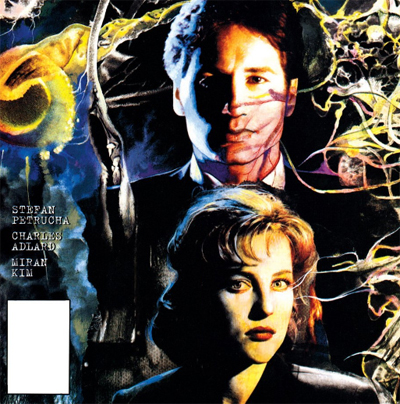


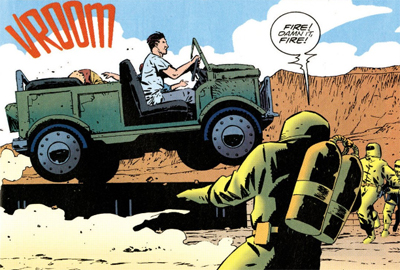

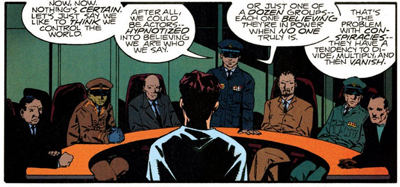


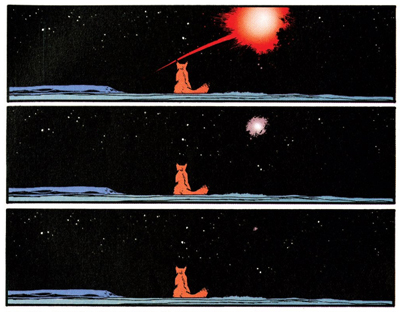
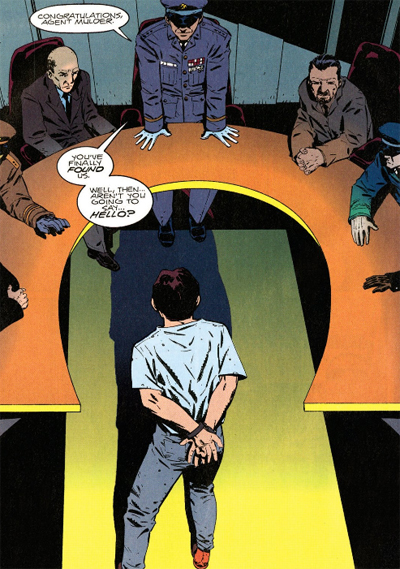
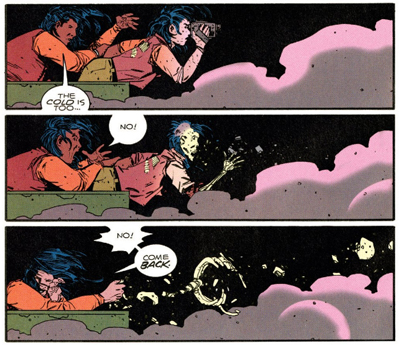
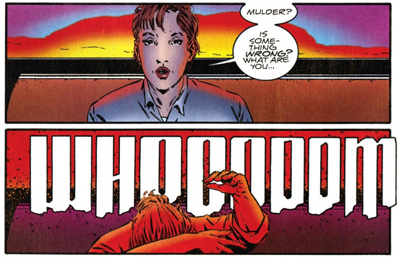

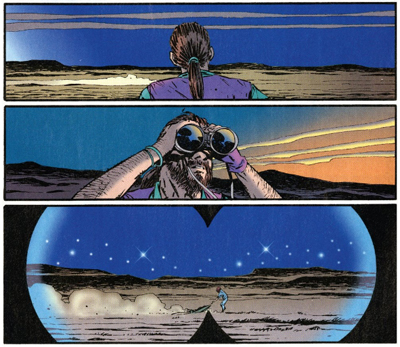
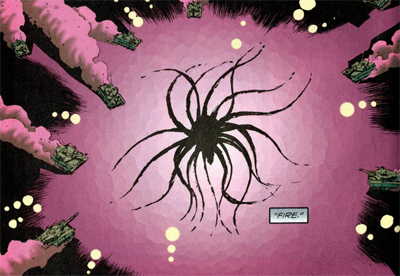





I loved this three-parter. Imagine a big-screen adaptation of it – that would be incredible. But as you say, as good as it was it didn’t really gel with the X-Files aesthetic. Still a lot of fun though, and I loved the name General Shadenfreud!
Interestingly, popular UFO lore has it there really was a Project Aquarius. Don’t ask me how I know that or I’d have to kill you (or admit to being a massive teenage UFO geek, one or the other).
You are – on quick google – correct. I did not know this. Apparently it’s part of the Majestic Twelve, which I did know about, to salvage some geek cred. In fact, I think Anasazi references the Majestic Twelve, so you do get a lovely conspiracy-within-conspiracy vibe from Petrucha’s run.